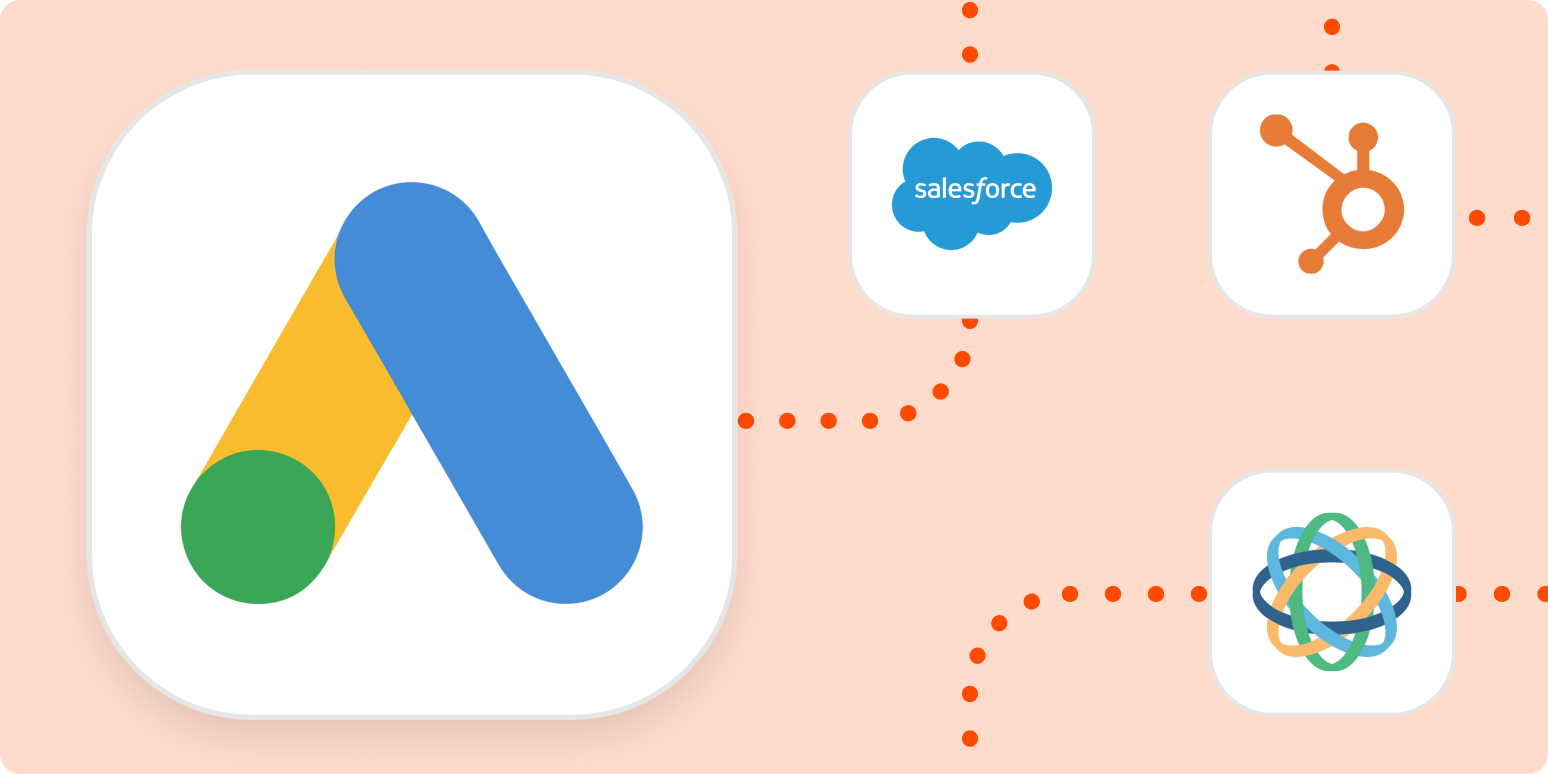Managing Google Ads campaigns is incredibly time-consuming. Dedicated account managers at advertising firms often monitor each campaign daily to assess multiple key metrics, see what’s running, send information from lead ads to other sources, and update audience targeting criteria. This can be overwhelming—especially for small businesses trying to run their own campaigns.
Automation can go a long way toward helping account managers at advertising firms and marketing managers at small businesses to improve their ad results by streamlining campaign management. Automation can reduce the number of manual tasks you need to complete every day or week, and can even help you keep track of all those moving pieces. All of this means a higher ROI in the long run.
Here are five ways to integrate Google Ads with other apps to help you automate and improve your campaign management process.
You’ll need a Zapier account to use the workflows in this piece. If you don’t have an account yet, it’s free to get started.
Table of contents
-
Add people to custom lists from other sources
-
Automatically track when campaigns start or end
-
Launch or end campaigns from a single source
-
Send offline conversions data to Google Ads
-
Send leads from Google Ads to other tools
Add people to custom lists from other sources
One of Google’s exceptionally valuable features is its retargeting options. You can ensure your ad is seen only by people who meet certain criteria. For example, only showing an ad to people who recently visited your site or contacted your business.
You can also use segmented lists to:
-
Show relevant offers to high-value leads that you’re nurturing
-
Encourage additional purchases after a customer has already purchased a package or item
-
Show ads only to users who haven’t already purchased
If you’re manually creating those lists, taking data from your CRM (customer relationship management) or eCommerce platform and using it to create or update custom lists on Google Ads, you’re wasting time (and if you’re doing it by hand, likely to introduce errors). Automating this task with Zapier allows this task to be performed in the background and will save you a ton of hassle.
Automatically track when campaigns start or end
Keeping up with your live campaigns can actually be a surprisingly big challenge, especially if you have dozens (or even hundreds) of ads running at once.
It’s common for many advertisers to have campaigns scheduled to start and end at different points, particularly for time-sensitive promotions or to highlight a seasonal product. In these cases, tracking when campaigns begin and end is essential.
There are several ways Zapier can help with this, including setting up integrations that automatically add campaigns to your Google calendar or to send a Slack message when a campaign goes live. This makes it easier for your team to know what needs to be monitored and when it’s time to start preparing the next round of ads.
Launch or end campaigns from a single source
When you’re trying to manage a long list of campaigns, having the option to take bulk action can save you time.
There are fortunately multiple Google Ads integrations that allow you to launch or end ad campaigns from third-party sources, including from Google Sheets row updates or when new webhooks are created. The automation is seamless and close to immediate, giving your team more time to focus on the critical tasks at hand instead of making manual updates.
Other useful Google Ads automation integrations from Zapier
While the above will help you streamline Google Ads management, there are two other high-value integrations that can help strengthen the overall efficacy of your ad campaigns.
Send offline conversions data to Google Ads
While tracking online conversions that happen after someone clicks on your ad is relatively easy through Google Ads, offline conversions can be more challenging. It’s not always easy to see whether someone saw an ad before coming into your store or making an appointment if they didn’t click directly on the ad.
Google has tracking tools, however, that allow you to monitor offline conversions data that is tied to your Google Ads. And with Zapier’s integrations, you can send offline data to Google to better assess your campaign from third-party sources.
Send leads from Google Ads to third-party tools
Google Ads Lead Forms allow businesses to collect lead information with an easy-to-use ad extension. Actually getting that lead information is only the first step, however; you also need to deliver it to your team so they can act on it.
Lead nurturing is time-sensitive, and in many cases, your sales team will be more likely to drive conversions if they get in touch faster. Having a Google Ads integration that sends information from Google Ad lead forms straight to your CRM, email, or sales tools can help them get lead info and respond in a timely manner.
Automate Google Ads for better results
Google Ads’ platform has many features and capabilities, but it requires an enormous amount of hands-on management.
By using Zapier to integrate Google Ads with other tools you use, you can cut back on the manual tasks you need to do to keep your campaigns running and focus more on what matters most: analyzing performance and strategy to look for optimization potential.
Need help with more complex automation? Zapier Experts are certified consultants, freelancers, and agencies that can help you do more with automation. Visit our Experts directory to help you find the right Expert to work with.
Want to see more of what you can do with Google Ads and Zapier? Start your free trial.
[adsanity_group align=’alignnone’ num_ads=1 num_columns=1 group_ids=’15192′]
Need Any Technology Assistance? Call Pursho @ 0731-6725516




